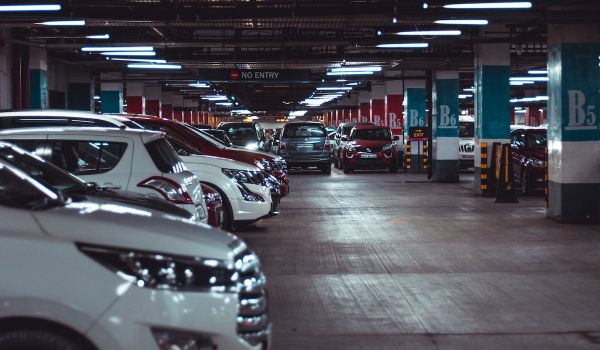When the mayor of São Paulo, a sprawling Brazilian megalopolis with a population of over 12 million, decided that the city’s most famous avenue would close for cars on Sundays, the move was met with resistance from residents and business owners in the area.
Many were afraid that the car ban, enacted in 2016, would increase noise pollution and decrease sales along the iconic Paulista Avenue, with its six lanes of traffic. But nowadays, about three quarters of city residents believe the program should be expanded to other major streets, and managers of local stores, too, are hoping the ban can be expanded to other days of the week.
A 2019 report by a group of local NGOs found that 86% of store owners were in favor of the program, called Paulista Aberta. About 68% said the program had a positive effect on their business.
“With the closing for cars, people started to walk a lot more, to stroll around, and the sales on Sundays grew sevenfold,” says Erivan Soares, manager of Martins Fontes, a large bookstore located on Paulista Avenue. “It was the best thing that could have happened for us. Sundays are now, by far, our busiest days.”
Now, he hopes the city will expand the car ban to Saturday afternoons, too, another time when many families are in the area.
“I think people feel better when they can get out of their houses and be outside on the weekends, and that translates to better sales as well,” the bookstore manager says.
The history of the street itself traces back to the 1890s, when an elite mostly composed of coffee farmers decided to build their mansions in the area because of the lack of space in the neighboring downtown area.
From the 1890s to 2016, Paulista Avenue underwent major transformations, going from a Europeanized boulevard to a bustling urban hub and financial center, complete with skyscrapers and large shopping malls. But the car ban program was one of the most drastic changes to the area to ever occur, according to architect and urbanist Antonio Soukef Júnior, author of a book about the history of the street.
“On my book, I divided the history of Paulista Avenue in three eras: the era of mansions, the era of buildings and the era of corporations,” says Soukef. “But the book was published in 2001, and it’s interesting to think about how it could have a new chapter today, because of Paulista Aberta: the era of people.”
Once a landmark for office complexes and large residential buildings, the street is now a cultural hub and the city’s main tourist attraction seven days a week, according to data from the São Paulo Tourism Office. The avenue is predominantly flat and is easily accessible by public transportation, with three subway stations along its 2.7 kilometers (1.67 miles), which makes it easy for tourists and Paulistanos alike to reach it.

A group of teens dances on Avenida Paulista on a Sunday. (Photo by Patrícia Figueiredo)
A day on Paulista Avenue
On a typical sunny Sunday, Paulista Avenue is now filled with families walking dogs, bicyclists taking advantage of the street’s bike lanes, artists playing music, and tourists from Brazil and abroad taking pictures. The vibrant urban life is no longer limited to the weekends, because several new cultural centers or museums have opened on the avenue since 2016.
The first addition to follow the Paulista Aberta program was Japan House, a cultural center dedicated to Japanese immigration inaugurated in April 2017. That same year, Instituto Moreira Salles opened in September, showcasing Brazilian photography, literature and music.
Then, in 2018, the long-awaited Sesc Avenida Paulista cultural center opened at the other end of the avenue, with several floors dedicated to diverse activities such as exhibitions and wellness classes, as well as a rooftop with breathtaking views of the city. The building is located right across the street from another landmark, museum Itaú Cultural, which is managed by one the country’s largest banks and houses an impressive collection of Brazilian art.

Heavy traffic on Avenida Paulista on a weekday. (Photo by Patrícia Figueiredo)
Ana Paula Fernandes is an architect from Northeast Brazil who is visiting São Paulo for the weekend. She had heard about Paulista Aberta from friends and had plans of going to the avenue on a Sunday to see what the buzz was about. She visited both Sesc and Itaú Cultural, but what she appreciated the most was the walkability from one tourist attraction to the other, she says.
“We actually came here last Wednesday and it was so busy, with so much traffic,” Fernandes says. “Today we can see some peace, it’s a lot of fun. I think closing [the street] for cars was a great idea. I’d love to see something like this in my hometown.”
Rüya Üçel, a student from Turkey, was also strolling there on a sunny but chilly Sunday in August. She was introduced to the area by a local friend, and enjoyed hanging out next to Museu de Arte de São Paulo, arguably the most important museum in the city, with over 10.000 pieces of art spanning from antiquity to the 21st century, spread around a building suspended above the ground by four red pillars.
“I like the avenue because even though it feels huge, with the large buildings and everything, there are so many different kinds of concerts going on,” says Üçel. “The music is my favorite part.”
Research conducted in 2019 showed that, on average, 43 cultural activities take place on the avenue every Sunday, including concerts like the ones Üçel enjoyed. The report – published by NGOs Bike Anjo, Corrida Amiga, ITDP and LABMOB – also recorded an average of 950 people and 70 cyclists passing on the avenue at every five-minute break.
Initial resistance
About 97% of the visitors and 71% of the residents support the car ban on Sundays, according to the NGOs’ report. The vast majority of this public (76%) believe the program should actually be expanded to other major streets in the city, the researchers found.
Activists had been pushing for a pedestrianized avenue since 2014 – a difficult move in a car-centric city such as São Paulo. Despite the current popular support, the municipal law was enacted amid heated debate as an executive order in 2016.
The mayor at the time was Fernando Haddad, under whom São Paulo expanded its bike and bus networks and became the world’s first megacity to eliminate parking minimums. His car-free Sundays project faced resistance from the local Department of Justice when prosecutors mentioned possible negative effects on traffic. The administrative process was later dismissed after the traffic management office conducted studies that showed that other streets had capacity to absorb most of the vehicles from Paulista Avenue. At the time, he invited prosecutors to learn more about the program, and pointed to similar initiatives in cities like Paris.
“You don’t have to take sides before seeing it,” Haddad said at the time. “Many cities have done this. Paris has recently had a car-free day in the entire city. The mayor was not threatened with fines and prosecution for this.”
In Paris, he noted, the move was largely celebrated as a first step toward addressing the city’s growing air pollution crisis. Since then, Paris has moved to ban all non-essential thru-traffic from its city center beginning in 2024.
In car-centric São Paulo, there was greater pushback. “There was a false assumption that Paulista was a necessary road for the city’s traffic, that closing it for cars on Sunday would cause an inconvenience that was irreversible,” explains Enrica Duncan, director of the NGO Nossas, one of the organizations that proposed the program back in 2016.

A Sunday night movie screening in front of Sesc Avenida Paulista. (Photo by Patrícia Figueiredo)
“People did not understand that it could be used for leisure because São Paulo had not yet had this experience in other places.”
But traffic wasn’t the main complaint for Paulista Viva, a group that represents residents – around 10,000 people live in middle to upper-class buildings located on the avenue – and business owners in the area.
“We were afraid not only the revenue [of businesses] could drop, but also the public could change, compared to the people visiting the avenue during the week,” explains Lívio Giosa, president of Paulista Viva. “This crowd occupation is dangerous, there is a huge amount of street sellers, which are a nuisance for store owners. It causes unfair competition.”
In spite of being initially against the program, the association now backs up the car ban, with reservations: Giosa thinks the crowds need to be better regulated, and that city hall is failing to manage the amount of vendors and street artists. Overall, though, he believes the move has been positive for the city’s culture.
“Nowadays, it’s a nice thing, it’s a space for families, for young people, so it feels like occupying this symbol of the city,” says Giosa. “There is a sense of belonging that comes with taking the space from cars.”
Patrícia Figueiredo is a Brazilian freelance journalist based in Denmark. Previously, she worked at G1, one of Brazil's largest news websites, focusing on investigative or data-based stories about nature, science, health and cities, and at Agência Pública, an award-winning investigative journalism outlet, covering local and national elections for their fact-checking unit. As a freelancer, she collaborated with popular Brazilian publications such as Folha de S. Paulo, Estado de São Paulo, UOL, L’Officiel and Veja. She was a Global Investigative Journalism Network fellow in 2017 and a Earth Journalism Network fellow in 2022. She is currently pursuing an Erasmus Mundus Master's in journalism, media and globalization at Aarhus University.
.(JavaScript must be enabled to view this email address)

_on_a_sunday_920_690_80.jpg)

_600_350_80_s_c1.jpg)












